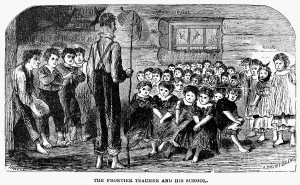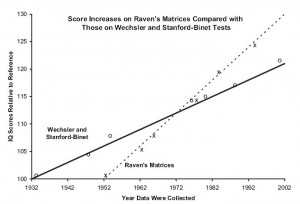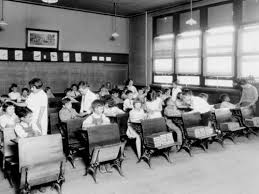Throughout our deliberation unit, the term ‘tracking’ came up frequently and it occurred to me that the definition remained rather vague. So for this week’s civic issue blog, I decided to take a look at what tracking really is.
When someone brings up the idea of tracking, people often immediately jump to think about foreign school systems. Countries such as Germany and Singapore begin separating students around sixth grade (or earlier, depending on the region). This kind of tracking is on a large scale where students take a test that places them into a high, middle, or low track. This placement determines the level of difficulty as well as the expectations for post-graduation work. This is the most common view of tracking. (**Although the focus of this blog post is not on whether these other nations’ wholesale tracking system is better or worse than our own, there is much debate over the effect it has on achievement. Click here to read about several Asian countries’ systems.)
However, tracking encompasses much more than sorting students into different schools. School districts where children progress through grade levels without taking a placement test often still track their students. To start, I would like to pose a question: how many of you took AP classes in high school? How many of you took almost exclusively AP classes? Were your electives separated by level of difficulty or did everyone mesh together regardless of ability? In elementary school, did your teacher separate you into different reading groups depending on ability? All of these are forms of tracking.
To shed some light on how the United States arrived at these various forms of tracking, let’s take a look at our educational history. Before the nineteenth century, schools were usually one-room schoolhouses where students learned from the books they had at home that they brought in or had no books and learned basic skills like reading and writing in a lecture-style class overflowing with students of all different ages. By the mid-nineteenth century, however, the school system was transforming into a more hierarchical organization with certain subjects designated for certain grade levels and a narrower range of ages for students. Still, students progressed through levels of schooling based upon their mastery of the material rather than how old they were.
By the turn of the century, high school-aged students were pouring in and the schools leaned more towards separating grade levels by age and promising a single, uniform diploma for all graduates. America’s focus switched from what grade level one could attain to what level one attained within that grade level (accelerated, standard, low level classes). By the 1960’s, schools became more standardized nationally on what subjects should be taught in what order. Programs like gifted and special education came into existence as a distinct form of tracking for students with abnormal abilities. The mid-twentieth century witnessed the shift towards mass intelligence testing and schools started to adopt IQ testing as the method of separating students. **Read more about the evolution of tracking and what social and political events helped shape our system here.
So that brings us to today. (Here I will focus on schools that do not employ wholesale tracking because the norm in the United States is not to sort students into different schools based on a single test, although this does still happen.) Whereas the tracks into which schools funneled students for much of the twentieth century were rigid and limiting, today’s tracking system offers much more flexibility. IQ testing as a means to sort students no longer exists (except for placement into special and gifted education, and even then IQ is not necessarily the deciding factor). Tracking is typically done within each subject and it is academic performance and teacher recommendations that determine which track students should enter. And these decisions are almost always negotiable.
Perhaps the most important development in tracking has been the preparation these classes offer for the future. For most of American educational history, the lower tracks severely limited career paths. Although differences in the curricula still exist, all levels of classes have a focus on preparation for college. I believe this coincides with the notion that higher education is now a reality (even an expectation) for every student, not just the cream of the crop. This is an important development because it allows for every student to earn a university degree if they work hard enough, which seems essential in today’s work market.
The current controversy on tracking rests mainly on whether tracking is inequitable and unfair. Does tracking still limit learning? Should there be more guidance and rigor at every level?












